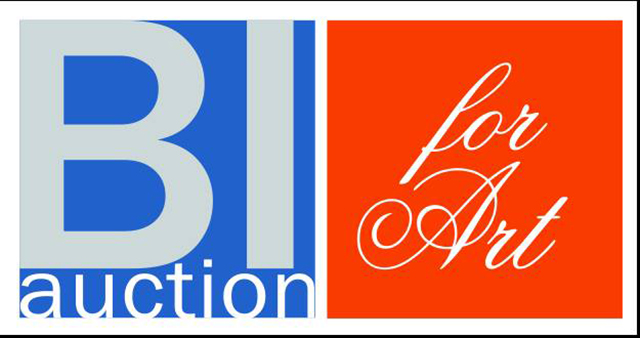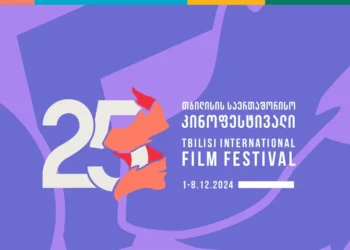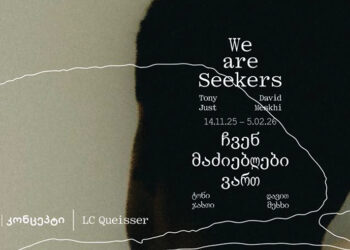GEORGIA TODAY, in collaboration as BI Auction, is continuing its series of coverage of artists in its ‘With Respect series.
’Cultural Heritage of Georgia from Private Collections – is a project within the frames of which Baia Gallery has been studying and popularizing pieces of art kept in private collections. These items are often rarities in an artistic, stylistic, or epochal sense: to extricate them from the hidden area of private collections, to study, exhibit and popularize them is an obligatory condition for researching the Georgian culture.
Contemporary Art covers the group of artists acting in the two last decades of the 20th century and the present day.
From its inception, Baia Gallery has presented and prepared exhibitions of numerous exceptional Georgian artists, among them Merab Abramishvili and Irakli Parjiani.
Irakli Parjiani is a pivotal figure in Georgian art. He belonged to a generation of artists who revived Georgian easel painting and whose fierce opposition to Soviet ideology and censorship rekindled an interest in religion, aristocratic heritage, and national identity. One of the great inspirations for these artists, and Parjiani in particular, was the tradition of Georgian fresco painting.
Born in Mestia, a mountainous region of Georgia famous for its distinctive style of religious art, the artist was a descendant of the medieval Latali Parjiani fresco painters. Arguably the artist’s signature painting style comes in part from this deeply embedded genetic knowledge.
In 1978, Parjiani joined the Tbilisi Anthroposophist Circle and was greatly influenced by its prevalent concepts. Encouraged to investigate the spiritual world, the artist explored religious motifs, often returning to the same subject matter: ‘Sometimes I think I am through with the theme of the Annunciation, but the more variations I paint, the more ideas crop up and it has become an endless, inexhaustible theme in my work. Concentrating on one subject for its profound conceptualization and perception is by far more important to me than a rapid progression and variety.”
Parjiani rethinks and reinvents Christian iconography and therefore assigns it a place in contemporary art. In employing the Christian color symbolism, the artist approaches color philosophically. White plays a particular role in Parjiani’s oeuvre; he uses it to portray a range of emotions. White epitomizes chastity and purity, but also holiness and divinity, which in traditional fresco painting is signified by gold.
Parjiani moved to Berlin in 1989, where he worked for a year. What later became known as the Berlin Cycle was completed a year before his death. It has come to exemplify the final stage of Parjiani’s career and is arguably the culmination of his oeuvre, encapsulating his comprehension, perspective, and experiences of the world. Characteristically, the cycle revolves around religious themes, landscapes, and abstractions. By this time, Parjiani had already painted a series of portraits and flowers, illustrated the Gospel, Goethe’s Faust, Homer’s Odyssey, and Galaktion Tabidze’s poetry, as well as various Georgian and German myths and fairy tales. The Metaphysical Landscape ties into the overall feel of the cycle; it is hard to decipher the composition, the objects seem to be reflected in the water with their weight and physicality removed. The canvas emanates the majestic calmness of a snowy landscape and of a taintless soul. This is the mysterious serenity of being; everything has grown torpid while waiting for resurrection.
Baia Gallery has organized over 20 exhibitions of Parjiani’s works, produced three catalogs, and traced more than 100 of his unknown works in private collections. In 2021, Baia Gallery curated an exhibition: ‘Irakli 2 Baia Tsikoridze, Ed., Irakli Parjiani: Paintings, Graphics, Tbilisi 2011. Parjiani and Niko Pirosmani’ at The Dimitri Shevardnadze National Gallery. The exhibition presented 80 works (paintings, graphic works, and illustrations) by Irakli Parjiani, drawn together from the museum and private collections. Some of the works (approximately 30 pieces) were displayed for the first time.
***
Baia Gallery is an art gallery specializing in modern and contemporary art with two locations in Tbilisi, Georgia. Since its foundation, the gallery has been at the forefront of the Georgian art marketplace with highly desirable works of leading artists, historical scholarship, and insightful market analysis. Established in 1992 in post-Soviet Georgia by Baia Tsikoridze, Baia Gallery is the first private structure operating in this field.
The establishment of the gallery connects with events such as war and crisis. It is paradoxical because the gallery started working at a time and in conditions unsuitable for the existence and development of such an institution.
There was a civil war in Tbilisi and the war in Abkhazia raging. The war, fire, crisis, and the survival instinct strangely made for the setting up of the Orient gallery (now Baia Gallery), when in an old part of Tbilisi, in the abandoned and empty Chardin street, they found a small, two-story house and started to work under the conditions unimaginable for a gallery as well as for any other institution. Under those circumstances, few factors made this possible, the first being the mutual desire of artists and the gallery to collaborate. Since the day of its foundation, the gallery has been working in two main directions: cultural heritage from private collections and contemporary art, thus operating in the primary and secondary spheres of the art market.
Baia Gallery, Ingorokva Street, Tbilisi; Baia Gallery Razmadze Street, Tbilisi; New space coming soon















